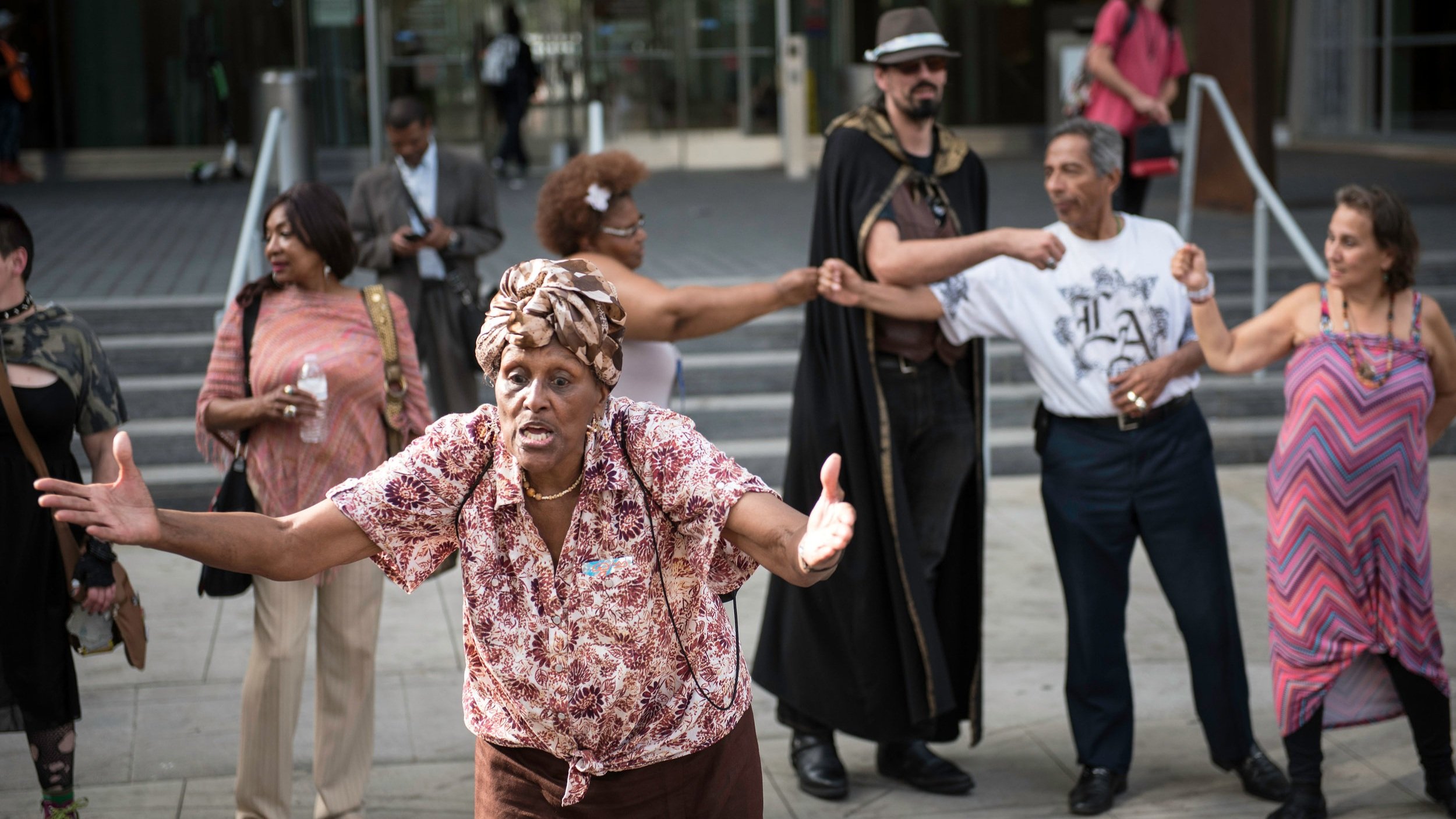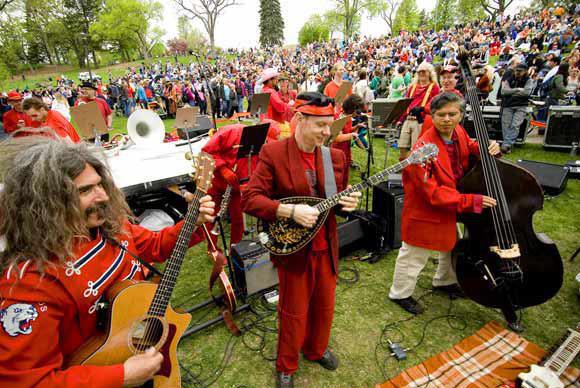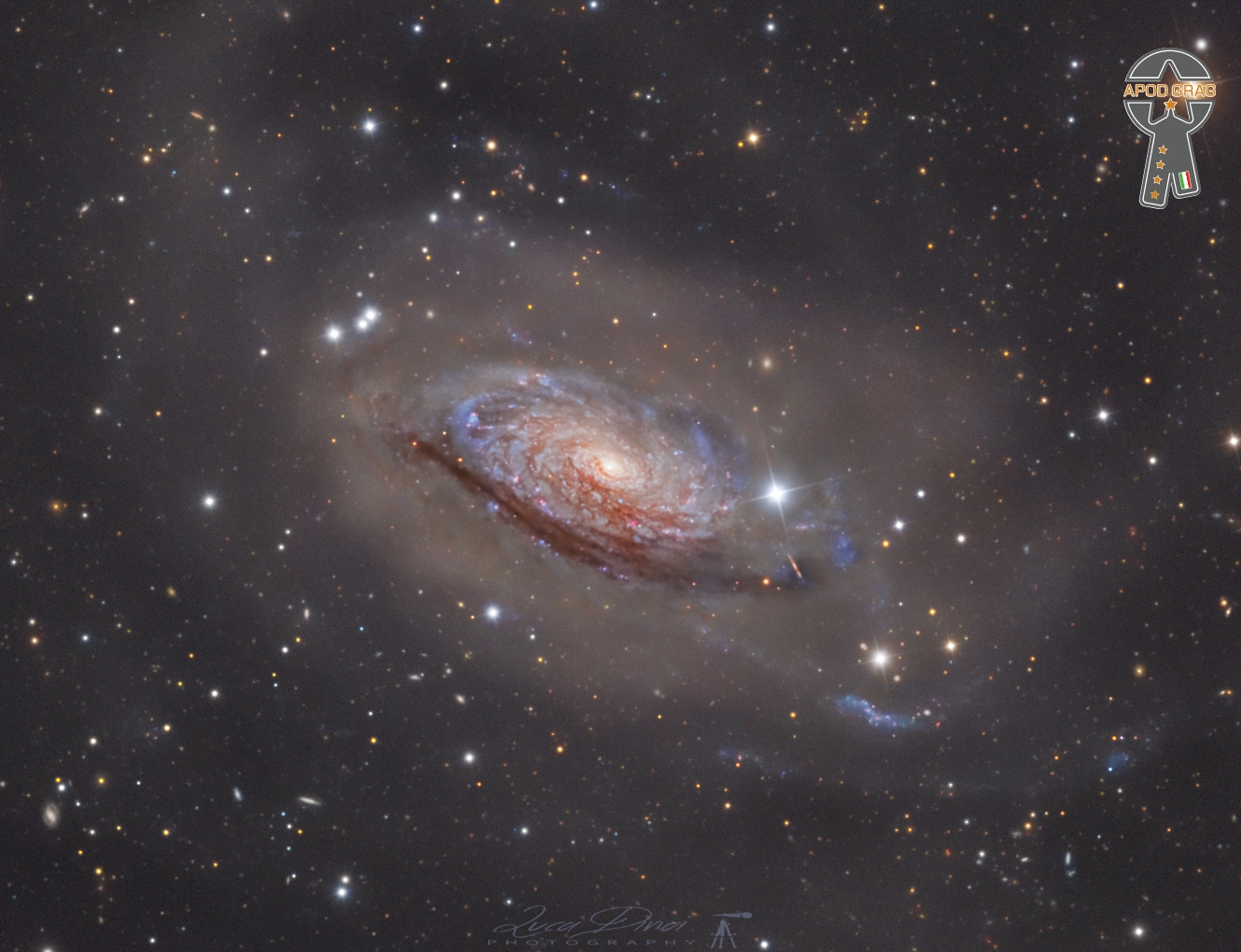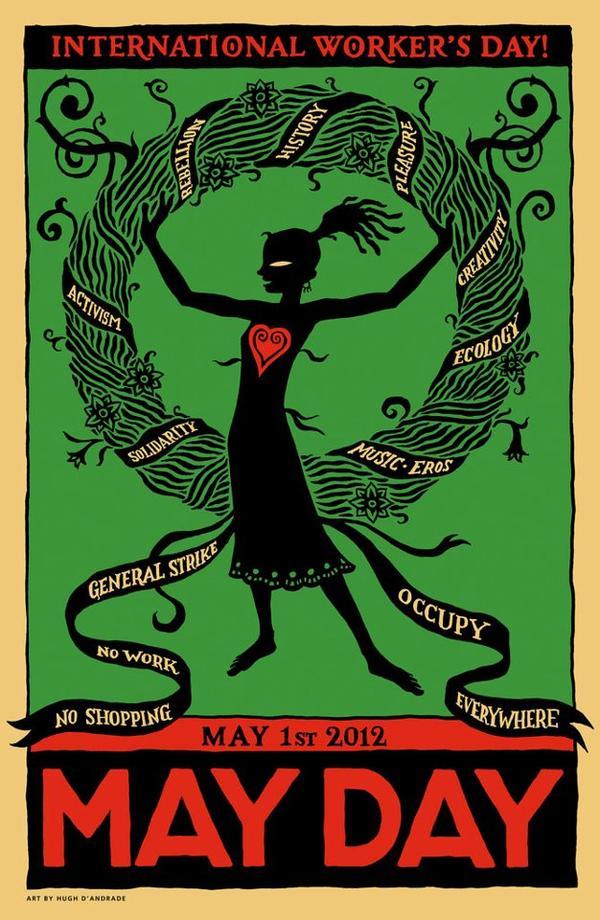Blog
Zamya Theater will perform “A Challenge to Change” Tuesday May 5th 2022 at 7pm at Plymouth Congregational Church 1900 Nicollet Ave, Minneapolis, MN 55403. mick will provide solo music accompaniment.

The magnificent spiral galaxy M99 fills the frame in this image from the NASA/ESA Hubble Space Telescope. M99 — which lies roughly 42 million light-years from Earth in the constellation Coma Berenices — is a “grand design” spiral galaxy, so-called because of the well-defined, prominent spiral arms visible in this image. M99 was captured by Hubble’s Wide Field Camera 3 on two separate occasions, helping astronomers study two entirely different astronomical phenomena. The first set of observations aimed to explore a gap between two different varieties of cosmic explosions; novae and supernovae. Novae, which are caused by the interactions between white dwarfs and larger stars in binary systems, are far less bright than the supernovae which mark the catastrophically violent deaths of massive stars. However, current astronomical theories predict that sudden, fleeting events could occur that shine with brightnesses between those of novae and supernovae. Despite being described by astronomers as being shrouded in mystery and controversy, just such an event was observed in M99. Astronomers turned to Hubble’s keen vision to take a closer look and precisely locate the fading source. The second set of observations were part of a large Hubble project which aims to chart the connections between young stars and the clouds of cold gas from which they form. Hubble inspected 38 nearby galaxies, identifying clusters of hot, young stars. These galaxies were also observed by the Atacama Large Millimeter/submillimeter Array (ALMA), a colossal radio telescope consisting of 66 individual dishes perched high in the Chilean Andes. The combination of Hubble’s observations of young stars and ALMA’s insight into clouds of cold gas will allow astronomers to delve into the details of star formation, and paves the way for future science with the NASA/ESA/CSA James Webb Space Telescope.

James Milton Cleveland (May 3, 1926 – August 23, 2008) was an American jazz trombonist born in Wartrace, Tennessee.
Cleveland was signed by EmArcy Records in 1955. Cleveland was married to jazz vocalist Janet Thurlow. He died on August 23, 2008, in Lynwood, California, at the age of 82.
https://www.youtube.com/watch?v=YT17H7e8GZA&list=PLOoWcYc8ovit4uoJ1gFQnz_DrT7NWQMS-
more...Peter Seeger (May 3, 1919 – January 27, 2014 NY, NY) was an American folk singer and social activist. A fixture on nationwide radio in the 1940s, Seeger also had a string of hit records during the early 1950s as a member of the Weavers, most notably their recording of Lead Belly‘s “Goodnight, Irene“, which topped the charts for 13 weeks in 1950. Members of the Weavers were blacklisted during the McCarthy Era. In the 1960s, Seeger re-emerged on the public scene as a prominent singer of protest music in support of international disarmament, civil rights, counterculture, workers’ rights, and environmental causes.
A prolific songwriter, his best-known songs include “Where Have All the Flowers Gone?” (with additional lyrics by Joe Hickerson), “If I Had a Hammer(The Hammer Song)” (with Lee Hays of the Weavers), “Kisses Sweeter Than Wine” (also with Hays), and “Turn! Turn! Turn!“, which have been recorded by many artists both in and outside the folk revival movement. “Flowers” was a hit recording for the Kingston Trio (1962); Marlene Dietrich, who recorded it in English, German and French (1962); and Johnny Rivers (1965). “If I Had a Hammer” was a hit for Peter, Paul and Mary (1962) and Trini Lopez (1963) while the Byrds had a number one hit with “Turn! Turn! Turn!” in 1965.
Seeger was one of the folk singers responsible for popularizing the spiritual “We Shall Overcome” (also recorded by Joan Baez and many other singer-activists), which became the acknowledged anthem of the Civil Rights Movement, soon after folk singer and activist Guy Carawan introduced it at the founding meeting of the Student Nonviolent Coordinating Committee (SNCC) in 1960. In the PBS American Masters episode “Pete Seeger: The Power of Song“, Seeger said it was he who changed the lyric from the traditional “We will overcome” to the more singable “We shall overcome”.
more...James Joseph Brown (May 3, 1933 – December 25, 2006 Barnwell, SC) was an American singer, dancer, musician, record producer, and bandleader. The central progenitor of funk music and a major figure of 20th century music, he is often referred to by the honorific nicknames “Godfather of Soul”, “Mr. Dynamite”, and “Soul Brother No. 1”. In a career that lasted more than 50 years, he influenced the development of several music genres. Brown was one of the first 10 inductees into the Rock and Roll Hall of Fame at its inaugural induction in New York on January 23, 1986.
Brown began his career as a gospel singer in Toccoa, Georgia. He first came to national public attention in the mid-1950s as the lead singer of the Famous Flames, a rhythm and blues vocal group founded by Bobby Byrd. With the hit ballads “Please, Please, Please” and “Try Me“, Brown built a reputation as a dynamic live performer with the Famous Flames and his backing band, sometimes known as the James Brown Band or the James Brown Orchestra. His success peaked in the 1960s with the live album Live at the Apollo and hit singles such as “Papa’s Got a Brand New Bag“, “I Got You (I Feel Good)” and “It’s a Man’s Man’s Man’s World“.
During the late 1960s, Brown moved from a continuum of blues and gospel-based forms and styles to a profoundly “Africanized” approach to music-making, emphasizing stripped-down interlocking rhythms that influenced the development of funk music. By the early 1970s, Brown had fully established the funk sound after the formation of the J.B.s with records such as “Get Up (I Feel Like Being a) Sex Machine” and “The Payback“. He also became noted for songs of social commentary, including the 1968 hit “Say It Loud – I’m Black and I’m Proud“. Brown continued to perform and record until his death from pneumonia in 2006.
Brown recorded 17 singles that reached No. 1 on the Billboard R&B charts. He also holds the record for the most singles listed on the BillboardHot 100 chart that did not reach No. 1. Brown was inducted into the first class of the Rhythm & Blues Music Hall of Fame in 2013 as an artist and then in 2017 as a songwriter. He also received honors from several other institutions, including inductions into the Black Music & Entertainment Walk of Fame, and the Songwriters Hall of Fame. In Joel Whitburn‘s analysis of the Billboard R&B charts from 1942 to 2010, Brown is ranked No. 1 in The Top 500 Artists. He is ranked seventh on Rolling Stone‘s list of the 100 Greatest Artists of All Time.
more...John Aaron Lewis (May 3, 1920 – March 29, 2001) was an American jazz pianist, composer and arranger, best known as the founder and musical director of the Modern Jazz Quartet.
John Lewis was born in La Grange, Illinois, and after his parents’ divorce moved with his mother, a trained singer, to Albuquerque, New Mexico when he was two months old. She died from peritonitis when he was four and he was raised by his grandmother and great-grandmother. He began learning classical music and piano at the age of seven. His family was musical and had a family band that allowed him to play frequently and he also played in a Boy Scout music group. Even though he learned piano by playing the classics, he was exposed to jazz from an early age because his aunt loved to dance and he would listen to the music she played. Once Lewis moved to New York, Clarke introduced him to Dizzy Gillespie‘s bop-style big band. He successfully auditioned by playing a song called “Bright Lights” that he had written for the band he and Clarke played for in the army.[10] The tune he originally played for Gillespie, renamed “Two Bass Hit”, became an instant success. Lewis composed, arranged and played piano for the band from 1946 until 1948 after the band made a concert tour of Europe. When Lewis returned from the tour with Gillespie’s band, he left it to work individually. Lewis was an accompanist for Charlie Parker and played on some of Parker’s famous recordings, such as “Parker’s Mood” (1948) and “Blues for Alice” (1951), but also collaborated with other prominent jazz artists such as Lester Young, Ella Fitzgerald and Illinois Jacquet.
more...This Picture of the Week showcases the impressive NGC 3627 galaxy, also known as Messier 66, located approximately 31 million light-years from Earth in the constellation Leo. The image was taken with the Multi-Unit Spectroscopic Explorer (MUSE) on ESO’s Very Large Telescope (VLT) in Chile. But why does it have these unusual colours? This image is a combination of observations conducted in different wavelengths of light. But rather than seeing the stars in this galaxy, as in more classical images, what this image displays is gas ionised by newly-born stars, with hydrogen, oxygen and sulphur shown in red, blue and orange respectively. The image was taken as part of the Physics at High Angular resolution in Nearby GalaxieS (PHANGS) project, which is using telescopes operating across all wavelengths to make high-resolution observations of nearby galaxies. The goal of the project is to better understand what triggers, boosts or holds back the formation of new stars in different environments.

Alexander Minto Hughes (2 May 1945 – 13 March 1998), better known as Judge Dread, was an English reggae and ska musician. He was the first white recording artist to have a reggae hit in Jamaica, and the BBC has banned more of his songs than those of any other recording artist, because of his frequent use of sexual innuendo and double entendres. Following his death, Rolling Stone reported, “He sold several million albums throughout his 25-plus year career and was second only to Bob Marley in U.K. reggae sales during the 1970s”.
more...1933-2004
Legendary and highly-respected Philadelphia pianist / keyboardist Eddie Green was a sideman on dozens of projects, and finally released two CDs as a leader, the long out-of-print debut “This One’s For You” and his posthumously-released coda Shades of Green.
After informal tutoring with Bud and Richie Powell and studying harmony, theory, composition and arranging at Combs College of Music, Eddie Green performed with the likes of Dexter Gordon, Slide Hampton, Donald Byrd, Hank Crawford, Max Roach, Betty Carter, Gary Bartz, George Coleman, Junior Cook and many others. He was on records that went “gold:” Billy Paul’s “Me and Mrs. Jones” and Lou Rawls’ “When You’ve Heard Lou, You’ve Heard It All.” His distinctive touch graced albums by guitar virtuoso Pat Martino, Sonny Criss and Jean Carn; in addition to his musicianship, his talents as as a composer were spotlighted on recordings by his own groundbreaking ’70s fusion group Catalyst, the Odean Pope Saxophone Choir, Rochelle Ferrelle and Suzanne Cloud.
Green appeared internationally at the Mt. Fuji (Japan), North Sea (Holland), Montreaux (Switzerland) and Nice (France) Jazz Festivals. Locally in Philadelphia, he was awarded honors by the Trane Stop Resource Institute, the City of Philadelphia and the Mill Creek Jazz and Cultural Society for both the 1993 and 1994 “Reader’s Choice” Best Jazz Piano
more...Richard Arnold “Groove” Holmes (May 2, 1931 – June 29, 1991) was an American jazz organist who performed in the hard bop and soul jazzgenre. He is best known for his 1965 recording of “Misty“.
Holmes’s first album, on Pacific Jazz with guest Ben Webster, was recorded in March 1961. He recorded many albums for Pacific Jazz, Prestige, Groove Merchant, and Muse, many of them with Houston Person.
He died of a heart attack after battling prostate cancer, having performed his last concerts in a wheelchair. One of his last gigs was at the 1991 Chicago Blues Festival with his longtime friend, singer Jimmy Witherspoon.
more...This year in the almost post pandemic MAYDAY there will be three simultaneous celebrations goimick will be performing with the Community. There will also be a May Day Parade! With the #SouthsideBattletrain will be rolling into Powderhorn Park from the Greasepit. And live music in the Park with The People’s Sound, The Headspace Collective, Technosferatu, and The Wizard Haus. HOBT will also be having a neighborhood festival MayDay Season 2022 will look different than MayDays past! There will be an amazing cultural and political festival in the form of a block party. The festival will take place May 1, 2022 from 1 to 4 pm in the Four Directions Family Center Parking lot, 1527 E. Lake St., Minneapolis, MN.

more...
Messier 63 or M63, also known as NGC 5055 or the seldom-used Sunflower Galaxy, is a spiral galaxy in the northern constellation of Canes Venatici with approximately 400 billion stars. M63 was first discovered by the French astronomer Pierre Méchain, then later verified by his colleague Charles Messier on June 14, 1779. The galaxy became listed as object 63 in the Messier Catalogue. In the mid-19th century, Anglo-Irish astronomer Lord Rosse identified spiral structures within the galaxy, making this one of the first galaxies in which such structure was identified.
The shape or morphology of this galaxy has a classification of SAbc, indicating a spiral form with no central bar feature (SA) and moderate to loosely wound arms (bc). There is a general lack of large-scale continuous spiral structure in visible light, so it is considered a flocculent galaxy. However, when observed in the near infrared, a symmetric, two-arm structure is seen. Each arm wraps 150° around the galaxy and extends out to 13,000 light-years (4,000 parsecs) from the nucleus.

Rita Coolidge (born May 1, 1945) is an American recording artist. During the 1970s and 1980s, her songs were on Billboard magazine’s pop, country, adult contemporary, and jazz charts, and she won two Grammy Awards with fellow musician and then-husband Kris Kristofferson. Her recordings include “(Your Love Keeps Lifting Me) Higher and Higher,” “We’re All Alone“, “I’d Rather Leave While I’m in Love” and the theme song for the 1983 James Bond film Octopussy: “All Time High“.
Coolidge was born in Lafayette, Tennessee. She is the daughter of Dick and Charlotte Coolidge, a minister and schoolteacher, with sisters Linda and Priscilla, and brother Raymond. She is of Cherokee and Scottish ancestry. She attended Nashville’s Maplewood High School and graduated from Andrew Jackson Senior High in Jacksonville, Florida. Coolidge is a graduate of Florida State University. She is a member of Alpha Gamma Delta sorority.
more...Judith Marjorie Collins (born May 1, 1939) is an American singer-songwriter and musician with a career spanning seven decades. An Academy Award-nominated documentary director and a Grammy Award-winning recording artist, she is known for her eclectic tastes in the material she records (which has included folk music, country, show tunes, pop music, rock and roll and standards), for her social activism, and for the clarity of her voice. Her discography consists of 36 studio albums, nine live albums, numerous compilation albums, four holiday albums, and 21 singles.
Collins’ debut album, A Maid of Constant Sorrow, was released in 1961 and consisted of traditional folk songs. She had her first charting single with “Hard Lovin’ Loser” (No. 97) from her 1966 album In My Life, but it was the lead single from her 1967 album Wildflowers, “Both Sides, Now” – written by Joni Mitchell – that gave her international prominence. The single reached No. 8 on the Billboard Pop Singles chart and won her her first Grammy Award for Best Folk Performance. She enjoyed further success with her recordings of “Someday Soon“, “Chelsea Morning” (also written by Mitchell), “Amazing Grace“, “Turn! Turn! Turn!“, and “Cook with Honey”.
Collins experienced the biggest success of her career with her recording of Stephen Sondheim‘s “Send in the Clowns” from her 1975 album Judith. The single peaked at No. 36 on the Billboard Pop Singles chart in 1975 and then again in 1977 at No. 19, spending 27 non-consecutive weeks on the chart and earning her a Grammy Award nomination for Best Pop Vocal Performance, Female, as well as a Grammy Award for Sondheim for Song of the Year. Judith would also become her best-selling studio album; it was certified Gold by the RIAA in 1975 for sales of over 500,000 copies and Platinum in 1996 for sales of over 1,000,000 copies.
In 2017, Collins’s rendition of the song “Amazing Grace” was selected for preservation in the National Recording Registry by the Library of Congressas being “culturally, historically, or artistically significant”. That same year, she received a Grammy Award nomination for Best Folk Album for Silver Skies Blue with Ari Hest. In 2019 at the age of 80, she scored her first No. 1 album on an American Billboard Chart with Winter Stories, a duet album with Jonas Fjeld featuring the Chatham County Line. In 2022, she released her first album of all original material, entitled Spellbound.
more...More Posts
- George Shearing Day
- World Music with Lamine Cissokho
- Daily Roots with Two Rasta Man & King Tubby
- The Cosmos with Cygnus OB2
- Pat Metheny Day
- Porter Wagoner Day
- Joe Jones Day
- World Music with Kardemimmit
- Daily Roots with Yami Bolo
- The Cosmos with NGC 3432
- Bill Heid Day
- Manabendra Mukhopadhyay Day
- Johnny van Derrick Day
- World Music with Kokoko
- Daily Roots with Joshua Moses
- The Cosmos with UGC 2369
- Ian Anderson Day
- Trudy Pitts Day
- Chuck Israels Day
- Arnett Cobb Day
